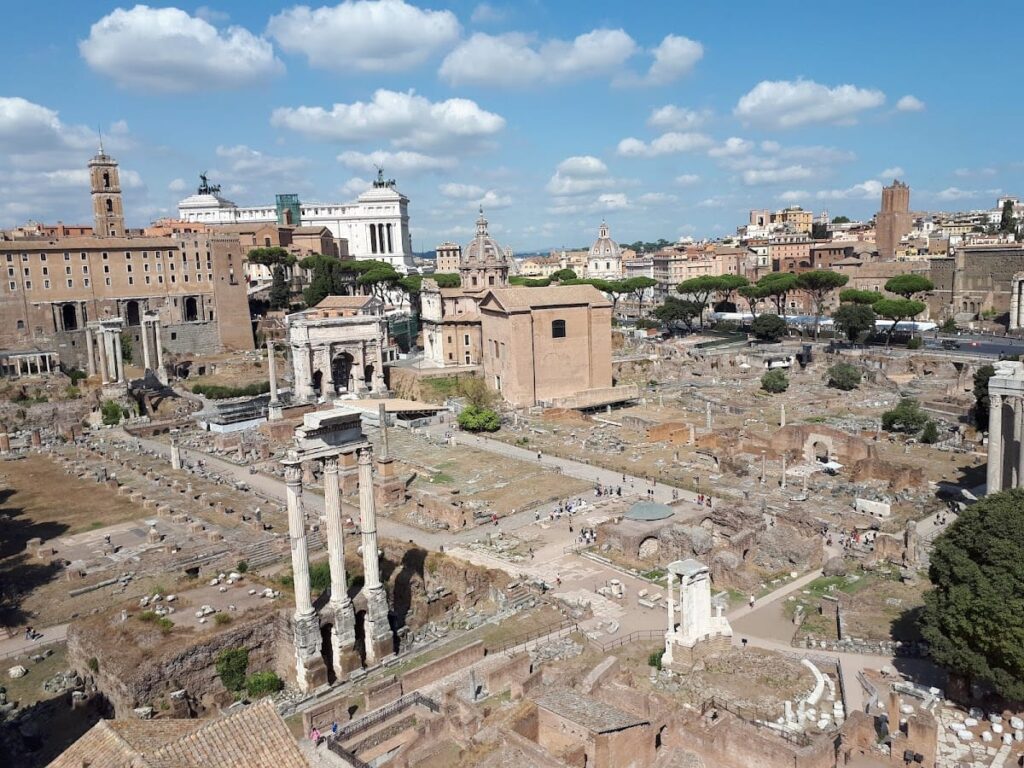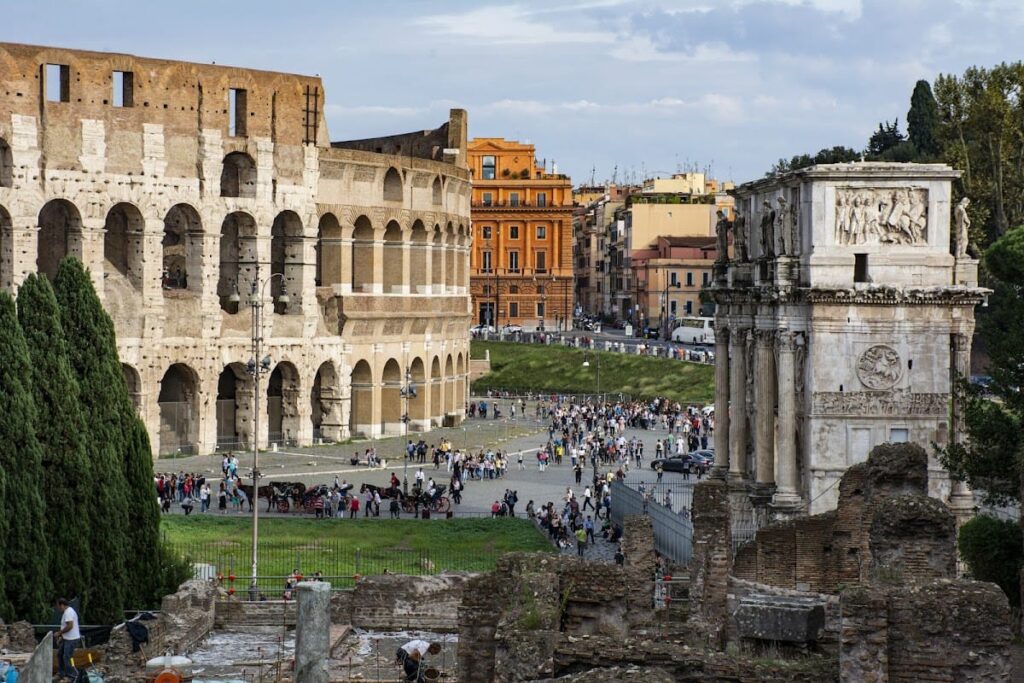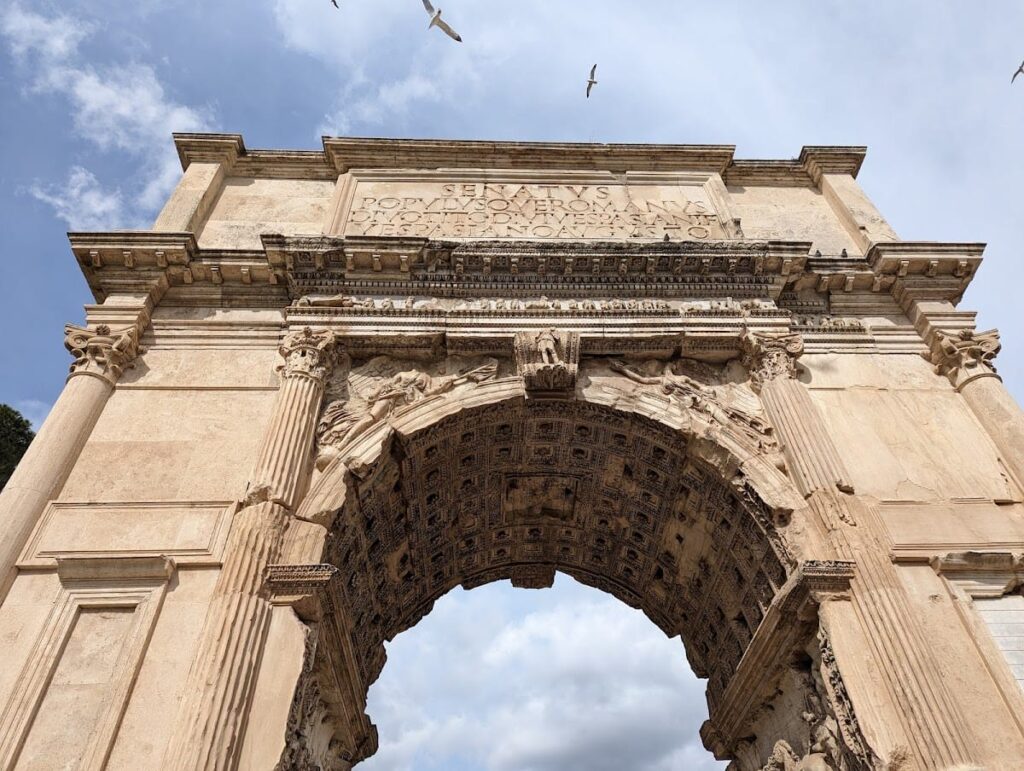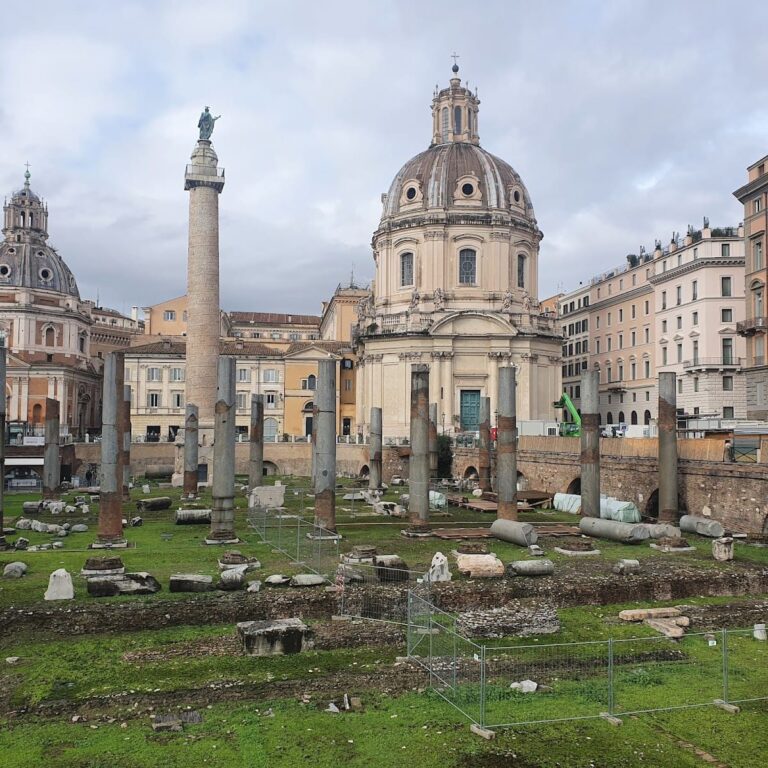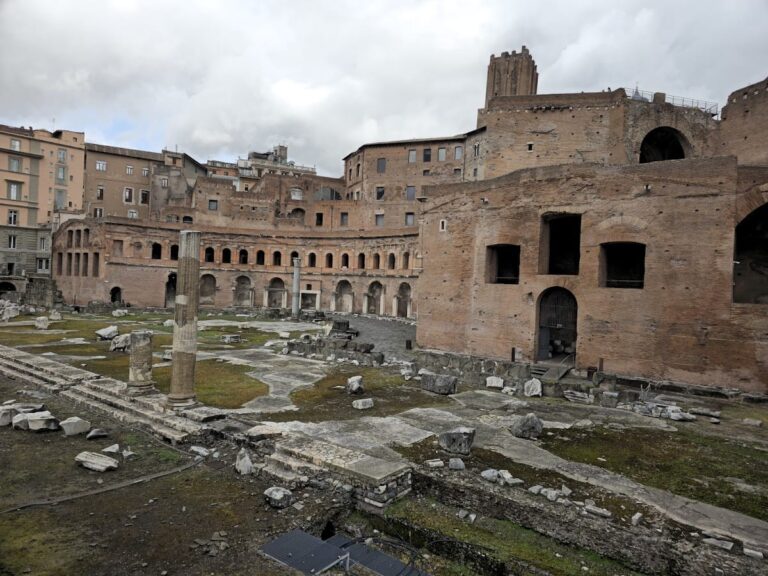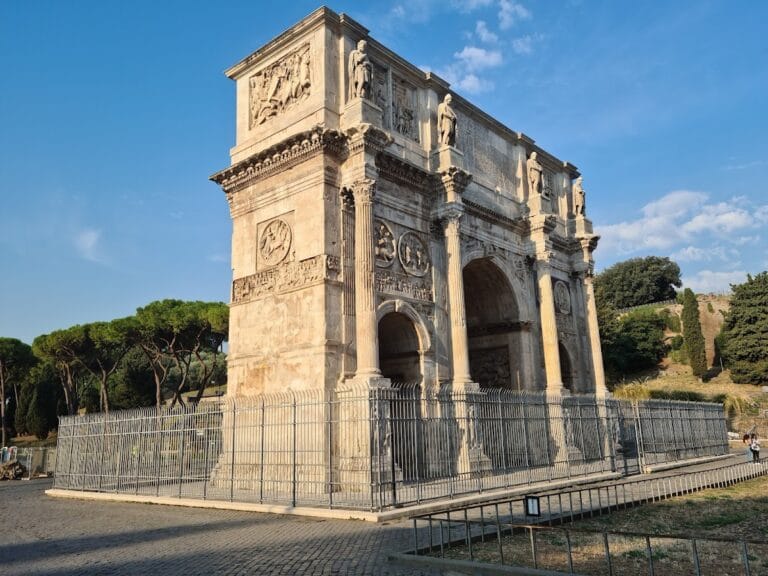Roman Forum: The Heart of Ancient Rome’s Civic Life
Visitor Information
Google Rating: 4.7
Popularity: Very High
Google Maps: View on Google Maps
Official Website: colosseo.it
Country: Italy
Civilization: Roman
Remains: Civic
History
The Roman Forum is located in the city of Rome, Italy. It was developed by the ancient Romans and served as the center of their political, religious, and social life. The site originally lay in a marshy valley between the Palatine and Capitoline Hills.
In the earliest phase, from the 10th to the 7th centuries BC, the area functioned as a burial ground. By the late 9th century BC, burials ceased as the Esquiline Necropolis became the preferred cemetery. According to Roman tradition, the Forum’s origin is linked to the alliance between Romulus, Rome’s founder, and Titus Tatius, leader of the Sabines. After the Sabine women intervened to stop a battle, the valley was designated as a meeting place between their communities.
Around 600 BC, the swampy valley was drained and paved under the Etruscan king Tarquinius Priscus. He commissioned the Cloaca Maxima, a large sewer system, to remove water and make the land usable. Early structures such as the Regia, Temple of Vesta, House of the Vestals, Comitium, Vulcanal, and Curia Hostilia were established. The Comitium served as the initial political and judicial center.
During the Roman Republic, the Forum expanded significantly as Rome’s political, judicial, and commercial heart. Temples dedicated to Saturn (built in 497 BC), Castor and Pollux (484 BC), and Concord (4th century BC) were constructed. The Forum became a venue for public speeches, criminal trials, gladiatorial contests, triumphal processions, and elections. The Rostra, a speaker’s platform, was a key site for oratory and was reoriented to face the people rather than the Senate.
Julius Caesar initiated major changes by building the Basilica Julia and Curia Julia, shifting judicial and senatorial functions to these new buildings. Augustus completed the Forum’s final form, adding the Temple of Caesar and the Arch of Augustus in 29 BC. Under the Roman Empire, economic and judicial activities gradually moved to larger fora north of the Roman Forum, such as Trajan’s Forum and Basilica Ulpia. The last major addition was the Basilica of Maxentius, constructed in 312 AD under Emperor Constantine.
The Forum witnessed several significant historical events. Cicero delivered his Catiline orations there in 63 BC. Julius Caesar’s funeral and cremation took place in 44 BC within the Forum. The assassination of Emperor Galba occurred in 69 AD. After the fall of the Western Roman Empire, the Forum declined. Many buildings were converted into churches, and by the Middle Ages, the area was buried under debris and became known as Campo Vaccino, used as pasture and farmland.
During the Renaissance, especially between 1540 and 1550, the Forum suffered extensive spoliation. Many ancient structures were dismantled to provide building materials for St. Peter’s Basilica, authorized by papal licenses. Archaeological excavations began in the 19th century, led by figures such as Carlo Fea in 1803 and Giacomo Boni from 1898 to 1925. These digs uncovered early structures and challenged traditional dates for Rome’s founding. Recent discoveries include an 8th–9th century BC tuff wall near the Lapis Niger and a 6th century BC sarcophagus and altar possibly linked to Romulus.
Remains
The Roman Forum is a rectangular plaza measuring approximately 130 by 50 meters in its Imperial form. It stretches from the Capitoline Hill to the Velian Hill and is oriented northwest to southeast. Originally a marshy lake, it was drained by the Cloaca Maxima. Over centuries, sediment and debris raised the ground level, with successive pavements built atop earlier layers. The travertine paving from Augustus’s reign remains visible today.
Among the key religious buildings, the Temple of Saturn is one of the oldest. Rebuilt in 42 BC by Munatius Plancus, eight of its columns survive. It also functioned as a state treasury and bank. The Temple of Vesta housed the sacred eternal fire, accessible only to the Vestal Virgins and the pontifex maximus. Adjacent is the House of the Vestals, a two-story residence for these priestesses. The Temple of Concord, located at the western end, was dedicated to harmony and possibly rebuilt under Emperor Tiberius; its podium lies beneath the Capitoline stairs.
The Temple of Castor and Pollux stands at the Forum’s southern end, with remains of its podium visible. It was rebuilt during the Augustan period. The Temple of Antoninus Pius and Faustina is the best-preserved temple, converted into a church in the 7th or 8th century. Nearby, the Temple of Romulus remains well-preserved due to its late antique church conversion. The Temple of Venus and Roma is situated on the slope toward the Colosseum, with its cella facing the Forum dedicated to Roma Aeterna.
Political and judicial buildings include the Curia Hostilia and later the Curia Julia, which served as Senate houses. The Curia Julia is the best-preserved tetrarchic building in Rome. The Rostra, a speaker’s platform originally facing north, was reconstructed by Diocletian with columns and decorated rostra (ship prows). The Basilica Aemilia (also known as Basilica Fulvia) and Basilica Julia are large public halls along the Forum’s long sides, used for judicial and commercial activities. The Tabularium, built in 78 BC at the Capitoline end, served as a records hall.
Other notable features include the Arch of Septimius Severus, a white marble triumphal arch erected in 203 AD near the Capitoline Hill, commemorating victories over the Parthians. The Arch of Augustus, one of two triumphal arches in the Forum, stands at the southeast end. The Vulcanal is an archaic sanctuary to Vulcan, featuring a small rectangular pit and an elliptical basin carved in tuff stone. The Umbilicus Urbis, considered the symbolic center of Rome and the empire, lies near the Vulcanal. The Lapis Niger is a black marble shrine area with ancient inscriptions, located between the Curia Julia and the Arch of Septimius Severus. The Via Sacra, the main processional road, crosses the Forum connecting the Capitoline Hill to the Arch of Titus.
Many structures survive as ruins, with columns, podiums, and foundations visible. Some temples, such as those of Antoninus Pius and Romulus, are well-preserved due to their conversion into churches. Excavations have revealed multiple layers of pavement and structural remains, including votive offerings and terracotta decorations. The Forum’s medieval and Renaissance spoliation caused the loss of many original materials, with extensive demolition of walls, temples, and houses authorized by papal licenses. Modern archaeological efforts continue, uncovering new structural details and addressing conservation challenges, such as damage to the concrete covering over the Lapis Niger.

